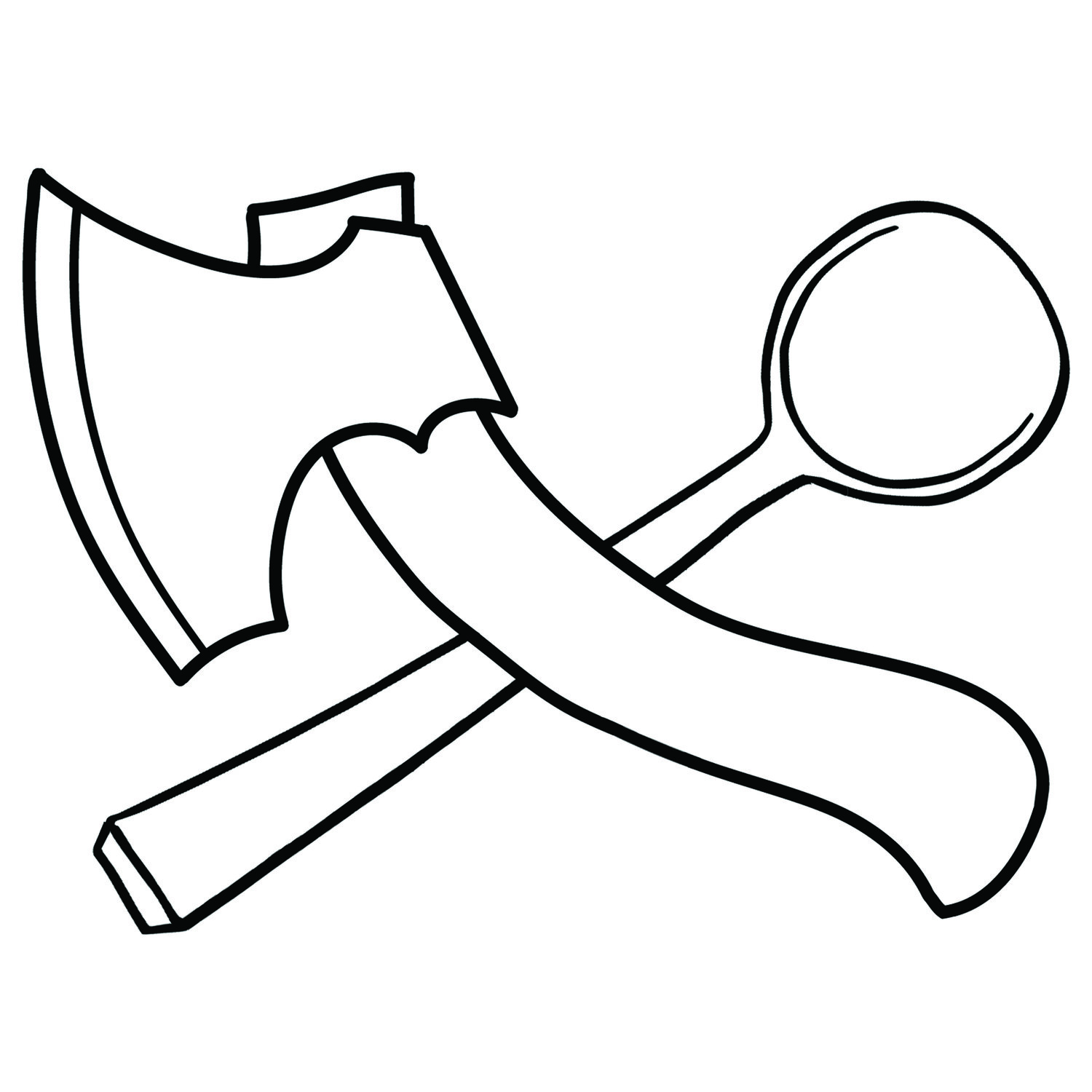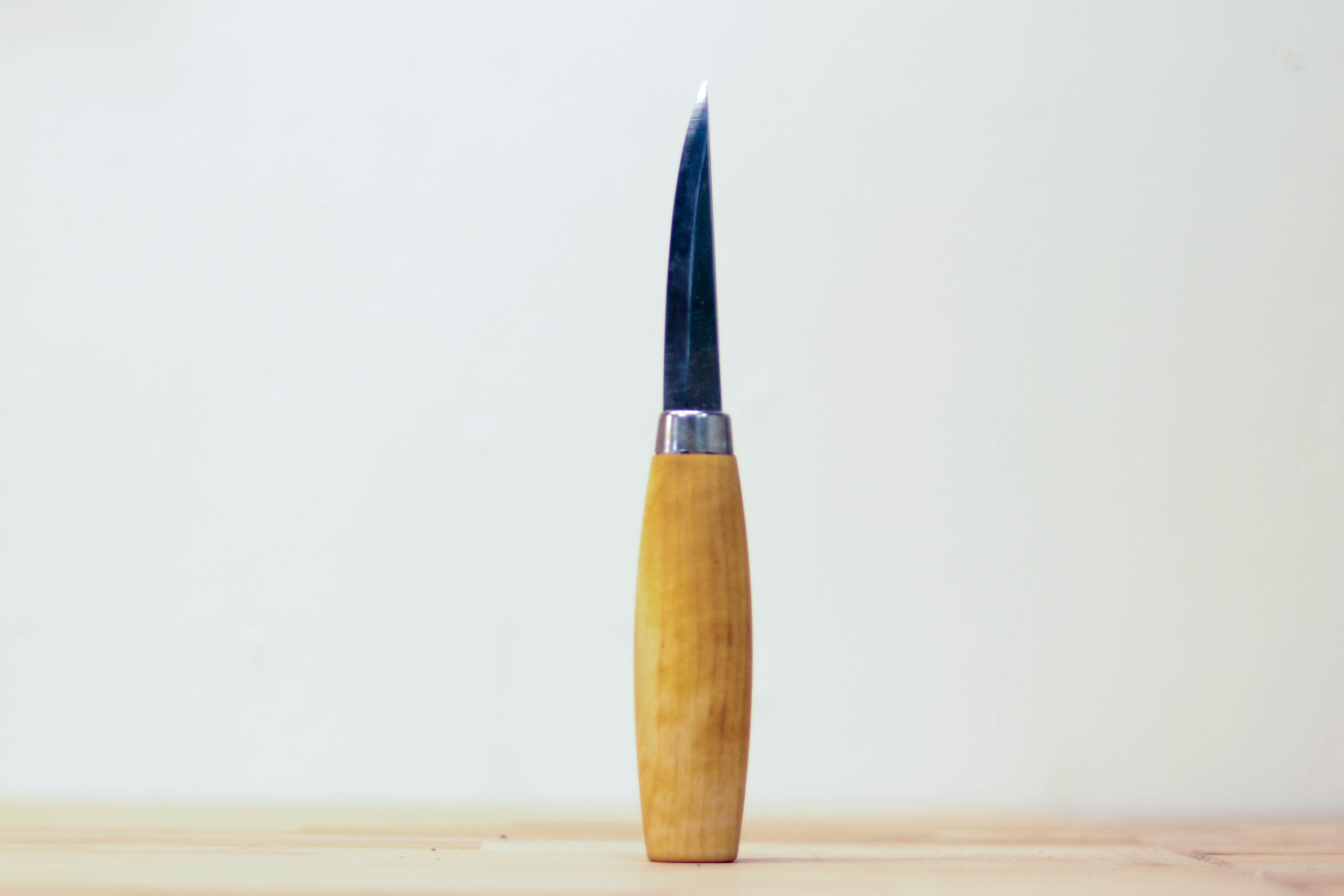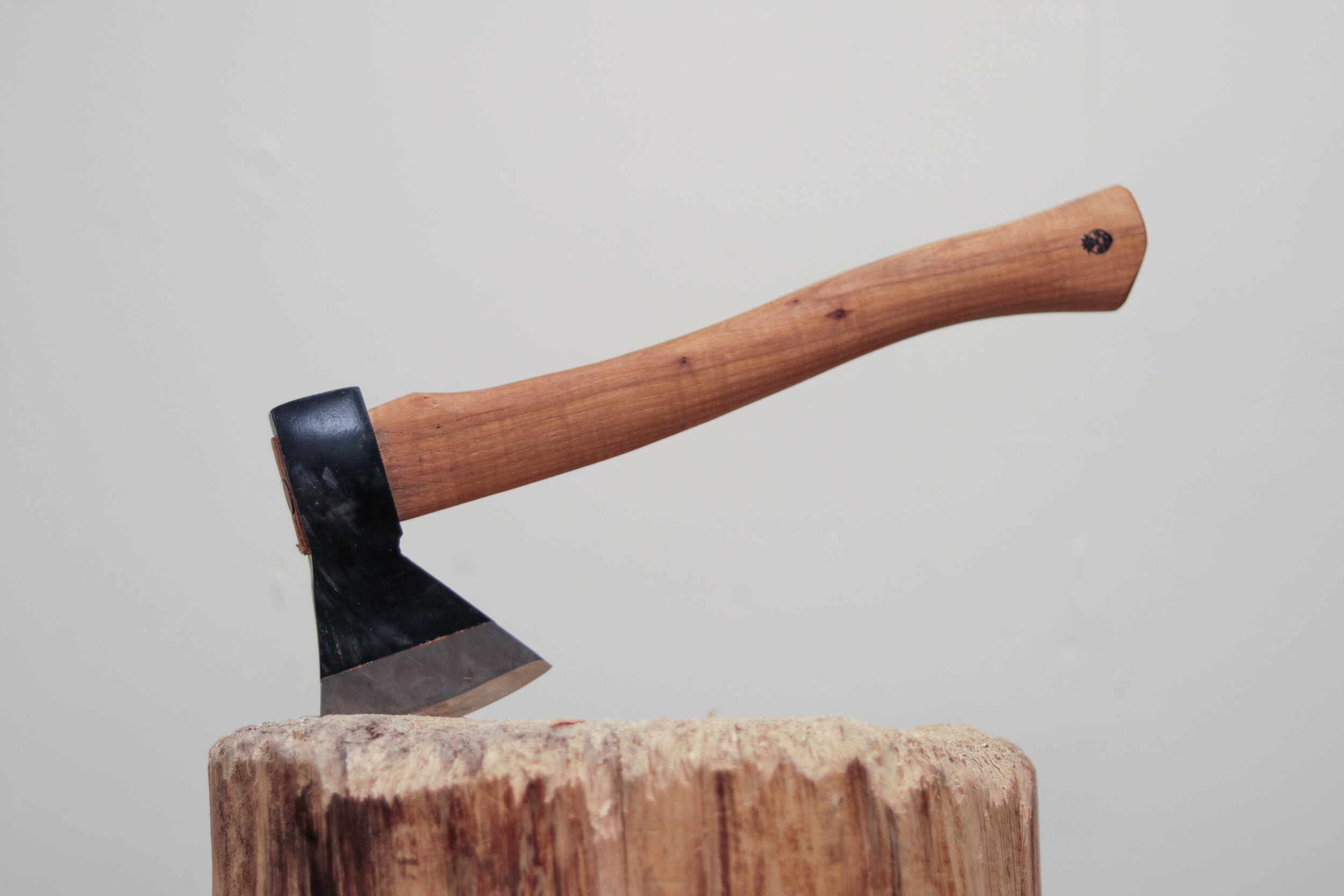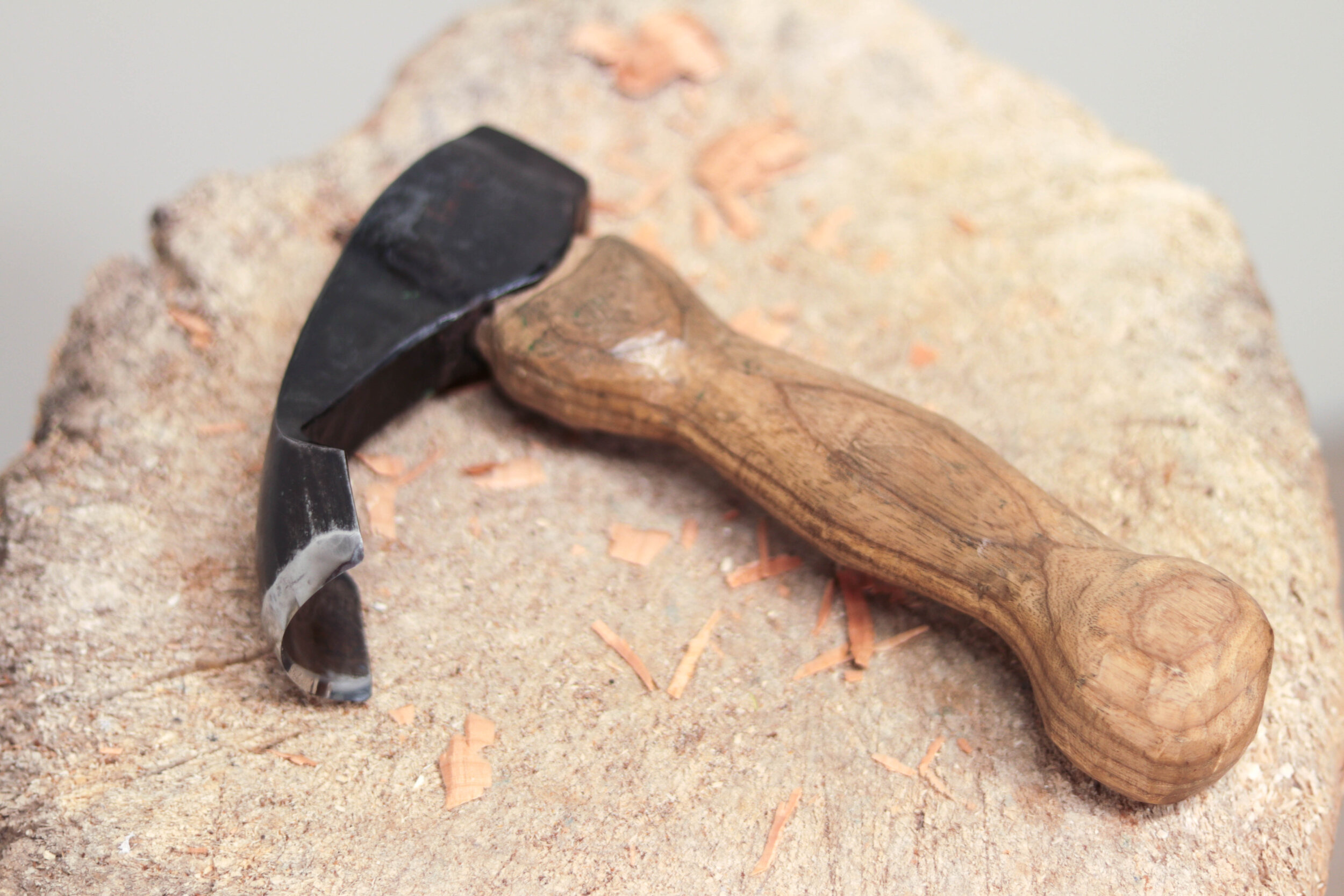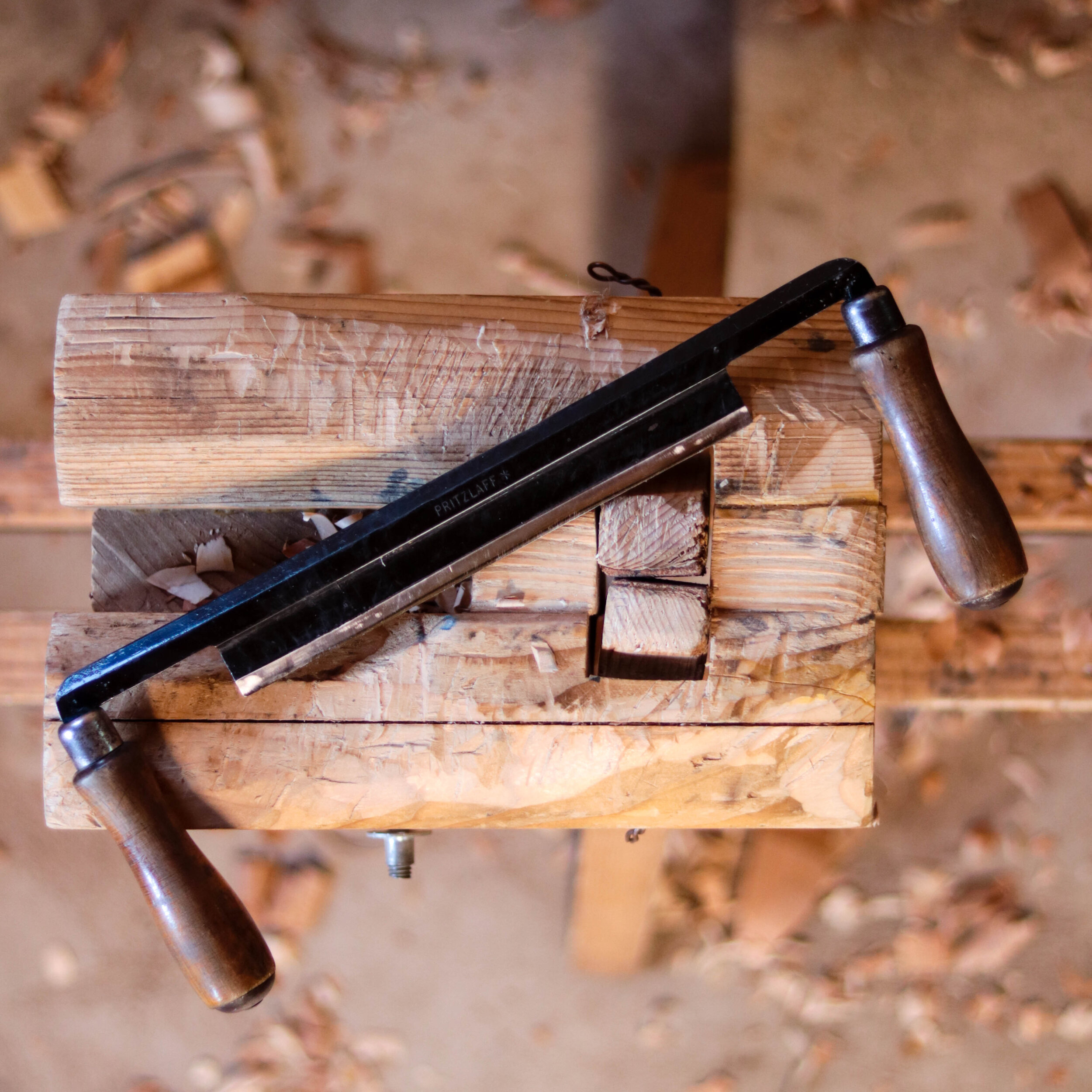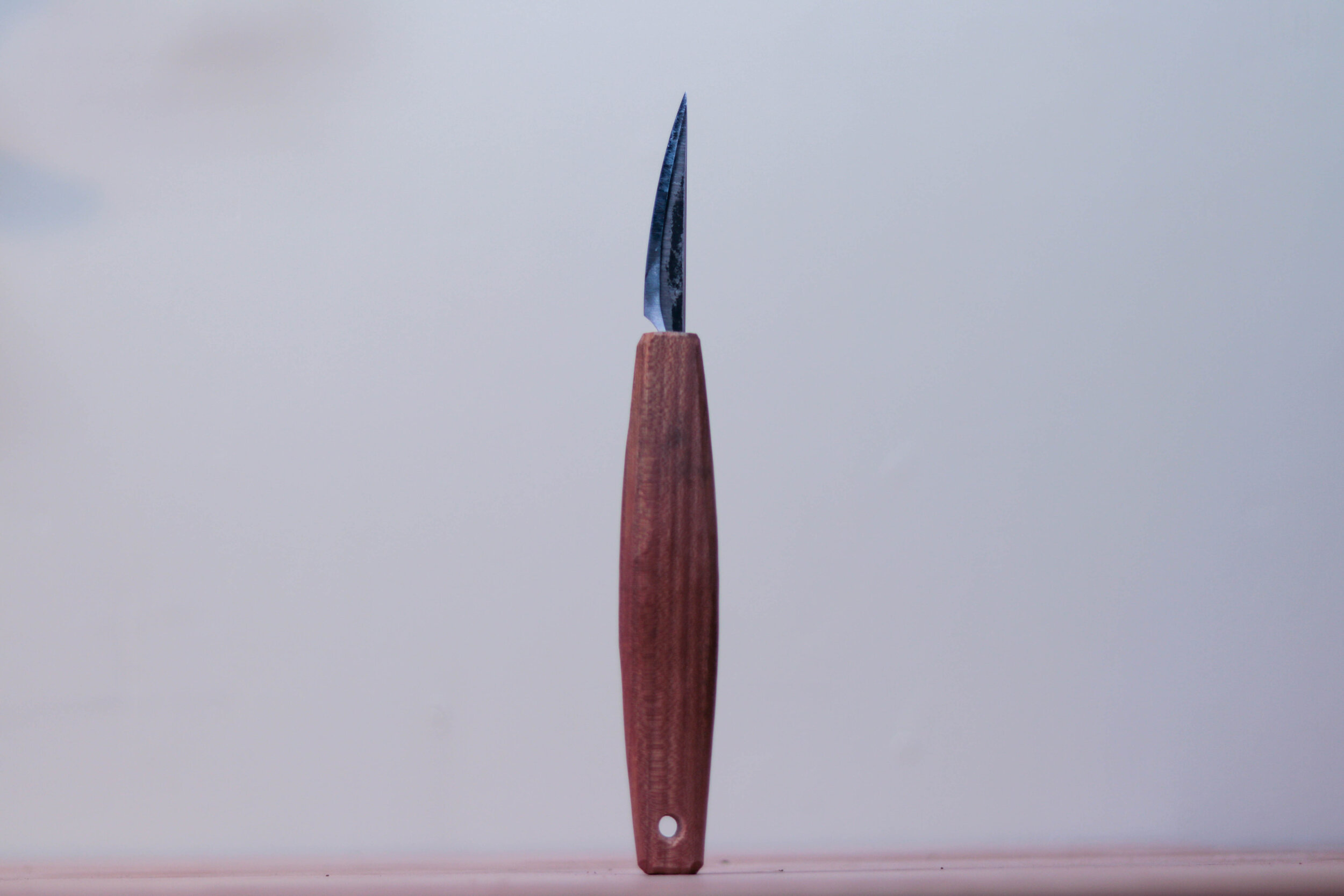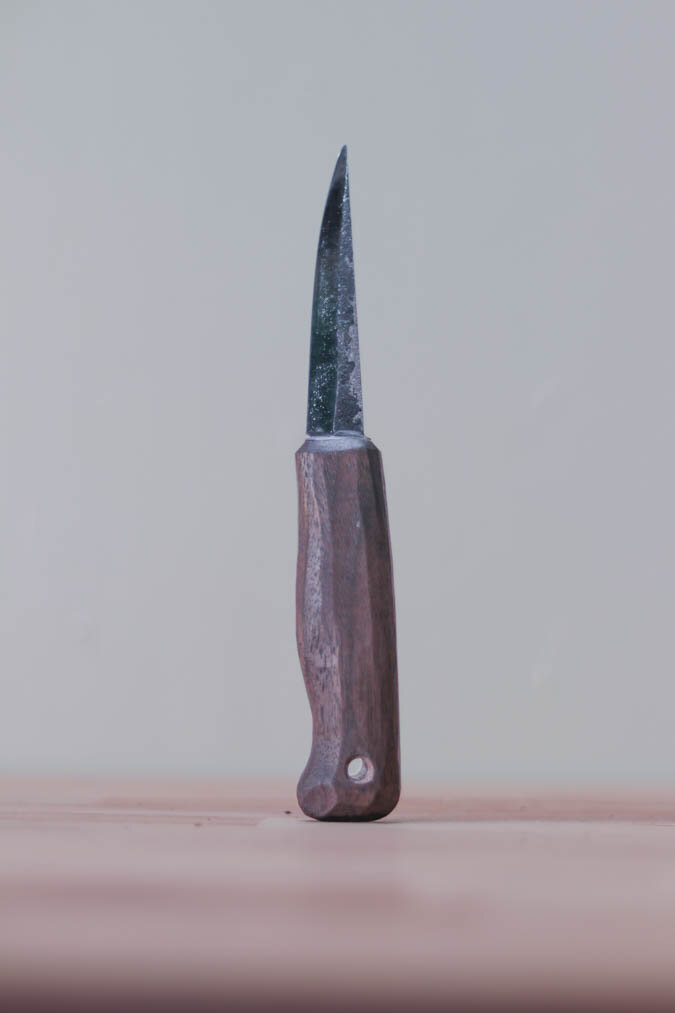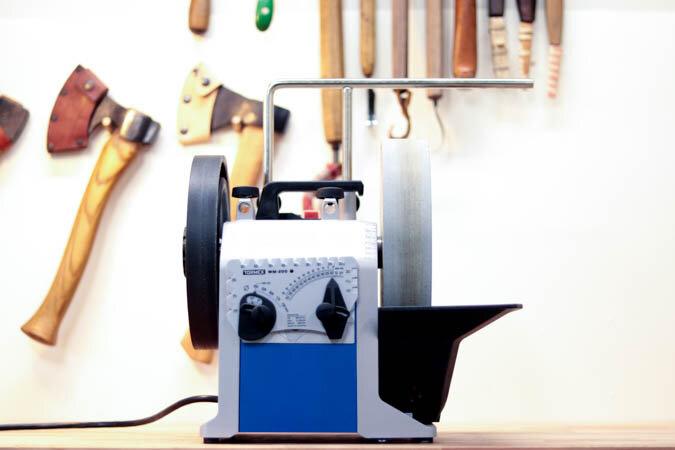Spoon Carving Tools
Whatever got you interested in spoon carving, you’re aware that some tools are needed, but you’re unsure of what exactly you’ll need or where to get it. This article will answer, in probably more detail than is really necessary, what tools you need. I’ll start with the absolute basics, give you a list of tools you might want to upgrade to if you’ve already carved a few spoons and finally list the more specialized tools you might want to consider depending on the direction your spoon carving interests take you.
I’m basing my recommendations on the tools I own or have used. If you have alternatives not listed here, let me know what works for you in the comments. Also, bear in mind that many of these tools are from small/one person operations so there might be issues with waitlists and low stock.
Just looking for a shopping list? Here you go:
Basics
Knife: Mora 106
Hook knife: Mora 164 or Wood Tools Compound Curve
(make sure you’re getting Right or Left handed as needed)
Spoon Blanks: Me or Spoon Crank
Sharpening:
Sandpaper (400, 600, 1500, 3000, 5000, 7000 grits)
A smooth, flat piece of wood to lay sandpaper on for sharping your 106
A wooden dowel to wrap sandpaper around for the inside bevel of your hook knife
Expanding Your Kit
Saw: Crosscut saw or Pruning saw
Budget Axe: Robin Wood Carving Axe or Green Haven Forge Axe
Adze: Hans Karlsson 50mm adze or Jason Lonon Spoon Adze
Drawknife: Secondhand market (straight, 6-8” edge) or Lie-Nielson Straight Drawknife
Froe: Secondhand Market
Finishing knife: Dave Cockcroft
Kolrossing knife: Dell Stubbs
Upgrades
Hook Knives: Anything from the following makers:
Sloyd Knife: Anything from the following makers:
Sharpening:
Carving Hatchet:
Chainsaw: Mine’s a battery powered Greenworks Pro.
Looking to learn a little more about the tools listed? You’re in luck my friend!
Basics
Knife
Get the Mora 106. Heck, get several if budget isn’t an issue (or if you really suck at sharpening). They retail for about $30 USD all over the internet. It’s a fantastic knife and honestly the best value out there. Go for this knife over the shorter 120 model. The longer 106 means it has a narrow tip, great for carving tighter concave curves.
Hook knife
The following two options are the best in the availability/price/quality matrix.
The new Mora 164 (pictured) is an good-enough starter hook knife. This hook knife is easy to find and costs about $40. For a little extra you could go for one of Wood Tools hook knives. These go for £43 GBP and are a nicer tool to use. A beginner would get the most out of their Compound Curve hook knife. These two options are the best in the availability/price/quality matrix. Make sure you get right or left-handed as needed.
Spoon Blanks
If you’re just dipping your toes into the spoon carving world, starting with roughed out blanks is one way to ease yourself in. Eventually you’ll want to be making these yourself. In my workshops I’ve noticed that axe work and sourcing the raw materials tend to be major barriers to folks just starting out. Getting spoon blanks removes these barriers and gets you carving sooner.
I sell a selection of spoon blanks. If you feel like the above paragraph is all sales pitch, here’s a link to a bunch of other makers who provide blanks. I just want to help you get carving.
Sandpaper
It’s basically a meme that spoon carvers don’t use sandpaper. The thing is, everyone uses sandpaper when they start out. Everyone. It’s the easiest way to tidy up an almost finished spoon without ruining it while you’re still building your carving skills. You get a finished spoon and don’t end up hating everything.
You also want a selection of high grit sandpaper to sharpen your tools with. Get some 400, 600, 1500, 3000, 5000 and 7000 grit sheets. You’ll want a flat surface to lay it on for sharpening your Mora 106 and a dowel to wrap it around to sharpen the inside of your hook knife.
Get some Green Honing Compound for stropping. You’ll strop regularly to maintain the edges of your tools. Just rub the compound into the same flat surface and dowel you’re using to support the sandpaper. One stick of compound will last approximately until the heat death of the universe.
Expanding Your Kit
Either you’ve carved a few spoons and want to broaden your capabilities or you’re confident that spoon carving is something you want to take a deep dive into. Here’s what to add to the above.
Saw
One of the many great things about spoon carving is that the raw material literally grows on trees. In trees? It’s wood, the raw material is green wood. That you can usually find for free. Most of the time it won’t be the right length. Get a pruning saw. Folding saws like the Bahco Laplander (pictured) and those made by Silky Saws are portable and usually pretty affordable. I used a no-name hardware store crosscut saw for years until the handle broke. Really doesn’t have to be anything special.
Axe
Fortunately there are now some great budget options out there. From the UK, the Wood Tools Robin Wood axe. They’re selling for £43 GBP. In the US, this recently released axe from Green Haven Forge. These are going for $65 USD. Both are great axes.
If you’re just starting out with spoon carving go for one of these. Both could easily be your forever axe. If you decide to eventually spring for a carving hatchet it’s great to have an axe lying around that can do the dirty work of splitting or removing bark.
To go with your shiny new axe, you’ll need a surface to work on. I’m about to make myself a new chopping block, so stay tuned for that tutorial.
Adze
The weird lovechild of an axe and a gouge. Having an adze will let you hollow out spoons quicker. It also opens the door to carving bowls and cups. I have a couple from Karlsson Tools (pictured, dodgy handle by me). Jason Lonon’s tools come well recommended too.
Drawknife
Getting a drawknife was a game changer for me. Having both hands on the tool makes it very safe to use. It engages your large back muscles, letting you perform very powerful cuts with a lot of control. It’s a nice tool for between the rough work of the axe and fine detailing of the knife.
I’ve had a lot of luck with the secondhand market when it comes to drawknives. Get a 6-8” straight drawknife with a clean looking edge. They’re pretty simple to sharpen up. If you want to go new, I’ve played with the Lie Nielsen drawknife and found it to be a great tool.
Just as an axe needs a chopping block, a drawknife needs the wood you’re working on to be clamped into place. The traditional bit of kit for this is a shave horse. A more specialized ‘spoon mule’ is what I use. You can get the plans I used to build my spoon mule here.
Finishing knife
This can be a slightly smaller knife than your regular sloyd knife for more fiddly cuts. I have one from Dave Cockcroft. It could also be a second Mora 106 that you keep aside for finishing cuts, saving the edge from the more abusive rough cuts. Nice to have, not a necessity.
Kolrossing knife
If you only do a little decoration then the tip of your sloyd knife will work fine. If you find yourself really getting into decorating your work then a specialised kolrossing knife makes the process more comfortable and enjoyable. Dell Stubbs does a nice little kolrossing knife.
Froe
A nice little splitting accessory. I find it useful for accurate splits across large rounds of wood. But you can get the same effect with a line of wooden wedges you’ve made yourself. Once again the second hand market came through for me. Doesn’t have to be anything special.
Upgrades
Sloyd Knife
The Mora 106 could easily be your forever knife. Knives from the following makers offer upgrades in the form of better steels, greater comfort and improved edge geometry. A beginner is less likely to benefit from these differences, so start with a Mora 106. Learn how to sharpen on it, drop it a couple of time and regrind the tip, reshape the handle to better fit your grip, carve a bunch of spoons with it. Then if you want something a little fancier you’ll have a better idea of exactly what features suit your carving style.
When you’re ready check out these knife makers:
Matt White (Temple Mountain Woodcraft)
Carving Hatchet
What separates a carving hatchet from the two axes recommended above is that carving hatchets are bearded, have an upswept toe, and a more heavily curved handle. The carving hatchets I recommend are:
Gransfors Bruks - Large Swedish Hatchet (this one might be a tad heavy for some folks)
Kalthoff Axes Small Carver
They’re all excellent, not a lot separates them. My current favourite is probably the Kalthoff Small Carver, but that’s just a personal preference. Whichever one you get, you’re not going to add much utility by adding a different one. But owning a bunch of axes is fun.
Hook Knives
For spoon carving there’s limited utility in having a variety of axes and straight knives. However, having a selection of hook knives can be helpful.
If you want to stick to the fewest tools possible, then a scorp such as this one from Lee Stoffer will be the least restrictive option. You won’t need left- and right-hand knives (required for scoops with deep vertical walls) and the compound curve lets you carve a variety of spoon bowls.
My most used hollowing tool is a 70mm twca cam made by Hans Karlsson. I had a 50mm twca cam from Nic Westermann for a long time but stopped using it after getting the HK. The larger radius gives a more gentle sweep and makes cosplaying Captain Hook a lot easier.
My most used ‘regular’ hook knife is the Fawcett hook from Nic Westermann. There’s quite the waitlist for his tools. I recommend hopping on it now. He only sells unhandled tools. If you’re not confident about handling a tool yourself, plenty of folks in the green woodworking world will be happy to provide that service for you.
I also have a spoon knife from HK. The round tang is great for hooking your finger to gain additional leverage. It’s a very comfortable tool to use.
I’ve also used tools from the following makers and can recommend them too:
Chainsaw
Bucking a 16” diameter log by hand isn’t much fun. I love my little battery powered Greenworks Pro chainsaw. It’s a bit of a wimp but it’s quiet and I can use it in my workshop without choking on fumes. It works for me, but if I had to replace it I’d probably go with a corded chainsaw as the battery life isn’t great.
Sharpening
Sandpaper will give you an excellent edge and on that account there’s no reason to change. I do however find it to be a little wasteful. A piece of sandpaper can only be used on a couple of tools before it’s no longer cutting steel efficiently. Sharpening stones feel like a less wasteful option.
I have a set of Japanese waterstones. They’re all Shapton stones, but are a mix of their glass stones and Kuromaku series. Waterstones are great, but they’re a little messy and need regular flattening to keep them cutting properly.
Another popular choice is diamond stones. I’ve never really gotten into diamond stones but, as they’re abrasives stuck to lumps of steel, they don’t dish out like waterstones. I think I just prefer the feel of waterstones.
If you’ve got the cash to spare, the premiumist upgrade is the Tormek.
A sharpening wheel is the only way to put a hollow grind on an edge. Hollow grinds are a little more delicate than the Scandi grind most of the tools have, but not so much so that it’s an issue. The biggest advantage is they’re quicker resharpen as you’re only removing steel from the edge and back of the bevel. The Tormek system is probably the best out there. Having jigs available to give you the perfect bevel angle everytime is kind of amazing. It’s easily the most expensive item on this list, but if you decide you need one it’s a really nice piece of kit.
So those are the basics, expansions and upgrades that I recommend. If reading isn’t your thing (how did you find yourself at the bottom of a blog post?) here’s a video to compliment this article:
If you enjoy the content of this site and find it to be useful, help me be able to spend time creating other helpful articles by becoming a Patreon.
